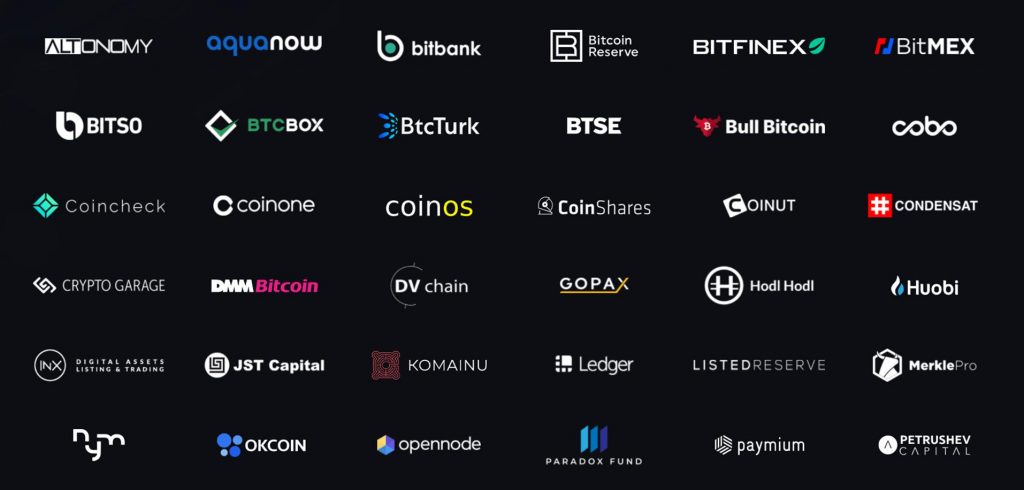Summary
- Layer 1 blockchain refers to the underlying blockchain architecture.
- Layer 2 blockchain refers to various protocols that are built on top of layer 1 to improve the original blockchain’s functionality.
- Layer 3 is represented by blockchain-based applications, such as decentralized finance (DeFi) apps, games, or distributed storage apps.

Bitcoin (BTC) was originally conceptualized as a blockchain that would handle all the transactional requirements of its users using the network’s underlying architecture. However, it soon became clear that the underlying network is too slow and inefficient for modern digital solutions.
This is when the blockchain added another layer to support more efficient operations. As other blockchains like Ethereum (ETH) introduced decentralized apps (DApps) functionality, a need for further layers on the platform was also realized.
What Are the Blockchain Layers?
Modern blockchains and the solutions built on them are often represented by three main layers.
Layer 1 Blockchain
Layer 1 refers to the underlying blockchain architecture, i.e., the actual blockchain itself. In the case of Bitcoin, it is the BTC network launched in 2009.
Layer 2 Blockchain
Layer 2 refers to various protocols that are built on top of layer 1 to improve the original blockchain’s functionality. Layer 2 protocols often use off-chain processing elements to solve the speed and cost inefficiencies of the layer 1 network. Examples of layer 2 platforms for Bitcoin include Lightning Network and Liquid Network.
Layer 3 Blockchain
Layer 3 is represented by blockchain-based applications, such as decentralized finance (DeFi) apps, games, or distributed storage apps. Many of these applications also have cross-chain functionality, helping users access various blockchain platforms via a single app.
What Is Bitcoin Layer 1?
Bitcoin layer 1 is the underlying BTC blockchain with its key components and functionality set. Layer 1 on Bitcoin includes the actual ledger of BTC transactions, the network nodes, and the block verification mechanism known as Proof of Work (PoW). In short, layer 1 Bitcoin is the actual BTC network with its full functionality as introduced in 2009.
What are the downsides of layer 1?
Unfortunately, despite being a breakthrough technology, Bitcoin has suffered from the problem of slow speed and, in recent years, high transaction costs. For example, five years ago, in November 2016, the average transaction fee on Bitcoin was just $0.25. In November 2021, the fee is already close to $5. Moreover, Bitcoin’s Proof of Work (PoW) block verification procedure is energy-consuming and slow. These factors mean Bitcoin has not been a particularly efficient network since its beginnings.
These technical inefficiencies gave rise to layer 2 protocols.
What Is Bitcoin Layer 2?
Bitcoin layer 2 refers to protocols with additional functionality built on top of layer 1. This additional functionality usually includes faster processing and lower transaction costs. Most of the layer 2 solutions achieve technical efficiencies by processing the bulk of transactions off-chain, and then transferring the completed transactions to the underlying layer 1 ledger in a batch mode.
Layer 2 protocols can be thought of as separate networks built on top of the layer 1 main network. The second largest blockchain platform, Ethereum, has a large variety of layer 2 solutions. In comparison, the number of actively maintained layer 2 solutions for Bitcoin is much more limited.
Bitcoin Layer 2 Projects
Among the notable layer 2 projects on Bitcoin are the Lightning Network, Liquid Network, and Omni Layer.
Lightning Network
Lightning Network (LN) is a layer 2 Bitcoin protocol that offers users a fast micro-payment platform. While crypto payments conducted via layer 1, the BTC chain itself, are slow and expensive, payments conducted via LN are executed very quickly and involve very low transaction fees.
The average transaction on LN is confirmed within seconds, and virtually all transactions are confirmed in less than a minute. In contrast, BTC layer 1 transactions take several minutes to confirm on average, and some transactions may remain in an unconfirmed state for days.

The median transaction confirmation times on Bitcoin have been hovering around the 10-minute level for the last 3 years (Source: Blockchain.com)
The fees are also vastly cheaper on LN. The average transaction fee on the platform is fractions of one US cent.
LN supports micro-payments down to miniscule amounts – the smallest allowed transaction is just 0.00000001 BTC ($0.00068). This might be useful for businesses who reimburse or reward their client base with frequent tiny micro-payment amounts. In comparison, the smallest amount you can transfer using BTC layer 1 is 0.00000546 BTC ($0.37), which is a nearly 550 times larger figure.
LN effectively solves the problem of BTC layer 1 scalability, specifically in the area of large-volume micro-payments. A lot of digital businesses require the large-volume payment option, something that the underlying BTC network would not be able to execute efficiently. In contrast, LN handles this kind of high-volume payments with ease.

Liquid Network
Liquid Network is another Bitcoin layer 2 project. It is a sidechain designed for traders and crypto exchanges for fast processing and settlement of Bitcoin transactions. In addition to BTC, it also supports USDT transactions.
The platform uses the L-BTC coin for network operations. Liquid Network is governed by a federation of 57 crypto platforms, many of them crypto exchanges.

Some of the Liquid Network’s governing members (Source: Liquid.net)
Typical transaction confirmation speed on the Liquid Network is around one minute, somewhat faster than on BTC layer 1, though not as fast as on the Lightning Network. The transaction fees are also just a fraction of one US cent on average.
Liquid Network is primarily used by traders, crypto exchanges, trading desks, and crypto asset issuers. Asset issuers can launch stablecoins, security tokens, and other crypto assets using the platform.
Omni Layer
Not all layer 2 projects focus on the issue of speed and costs of the underlying BTC layer 1 network. Some other projects try to solve other limitations of BTC. For example, Omni Layer is a layer 2 project that helps users create and trade customized crypto coins and assets.
One of the oldest layer 2 projects, Omni Layer, was also the first widely-known crypto platform to hold a substantial ICO, back in 2013. Omni Layer, called Mastercoin at the time, managed to secure half a million dollars in the ICO.
Omni currently hosts over 800 custom coins and tokens. Issuers of these assets can trade among themselves using Omni Layer exchanges. They can also freely trade their coins with BTC and USDT.
What Is Bitcoin Layer 3?
Layer 3 is often referred to as the application layer. It is a layer that hosts DApps and the protocols that enable the apps. While some blockchains such as Ethereum or Solana (SOL) have a thriving variety of layer 3 apps, Bitcoin is not optimized to host such applications.
As such, layer 2 solutions are the furthest deviations from the core network that Bitcoin currently has. Some projects are trying to bring DApp functionality to the BTC ecosystem via forks of the original BTC network.
Layer 3 Applications
For instance, CakeDeFi is a DeFi app offering services such as staking, lending, and liquidity mining to BTC coin holders. CakeDeFi is based on a fork of Bitcoin called DeFiChain. DeFiChain maintains “an anchor” to the core BTC chain for some of its operations, but technically speaking, it is still a separate blockchain of its own.
Some industry observers believe that the lack of DApp functionality is one of the biggest limitations of BTC. Ever since Ethereum’s arrival in 2015, layer 3 platforms have been growing strongly in popularity and value. Ethereum currently has close to 3,000 layer 3 apps. The DeFi apps based on the blockchain hold a total value of $185 billion by now.
Another leading blockchain, Solana, hosts over 500 layer 3 DApps, and the total value locked in the DeFi apps of the network is approaching $15 billion.
In comparison, BTC has no functioning app that could be clearly defined as a layer 3 application. There is an ongoing debate about whether projects designed to “force in” DApp functionality onto BTC are worth the effort. Some in the industry argue that BTC will always remain a network designed for crypto fund transfers, not DApps.
These people point out that the layer 1 BTC chain enjoys an industry-leading market cap (of $1.3 trillion by now) that dwarfs all the TVL and market cap figures of all layer 3 projects in existence combined. As such, Bitcoin may not be in any urgent need of layer 3 functionality, at least judging from the financial figures.

Conclusion
Blockchain platforms may have three distinct layers. Layer 1 refers to the actual underlying blockchain, with its core architecture and functionality. Examples of layer 1 networks are the Bitcoin, Ethereum, and Solana blockchains.
Layer 2 are protocols built on top of layer 1 networks and extend some functionality of the underlying blockchain. For example, they may offer faster speeds and lower transaction costs than layer 1.
Layer 2 protocols often use a combination of on-chain and off-chain operations to offer their extended functional capabilities. Examples of layer 2 projects on Bitcoin include the Lightning Network and Liquid Network platforms.
Layer 3 refers to the protocols that enable DApps on the blockchain. While some other blockchains have a large collection of layer 3 apps, the BTC blockchain has none of them. Some projects attempt to bring layer 3 functionality into the BTC ecosystem by using apps designed on forks of BTC.
However, these apps are still based on their own blockchains, not on the core BTC blockchain. There is a debate about whether BTC even needs to move towards enabling the layer 3 functionality. Some industry analysts argue that BTC is worth multiple times more than all these layer 3 apps combined, and therefore, it does not have a pressing need for layer 3 at all.
Read More
- What in the World is Layer Zero: The Connector of Blockchains
- Blockchain Analytics: 11 Free Crypto Research Tools You Need
- What Are Ethereum Layer 2 Solutions: Decentralized Scalability
- What is Cryptocurrency & How It Differs From Digital Cash
- What is Blockchain Technology: The Biggest Misconception About It
- Why Does Bitcoin Have Value?
- What Are Decentralized Applications (dapps)?
- DeFi vs. CeFi: Understand The Differences








